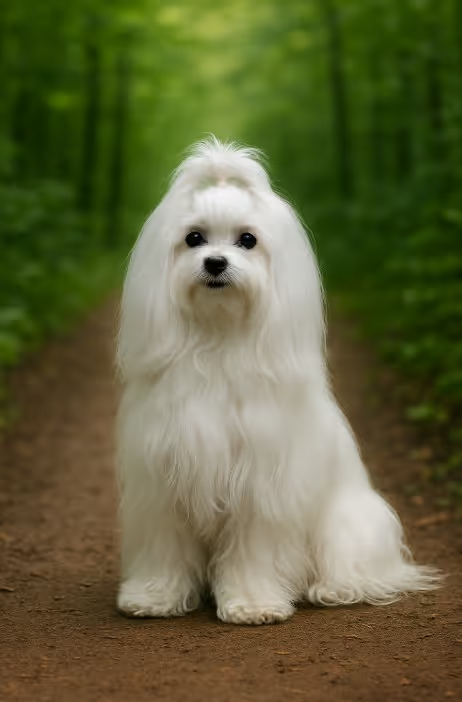The Maltese is a refined, affectionate toy companion - floor‑length, silky coat and a lively, loving nature. Perfect for apartments and city life when owners commit to grooming and gentle, positive training.

With roots around the Mediterranean - long associated with the island of Malta - the Maltese has been a cherished lapdog for millennia. It arrived in Western Europe centuries ago and today is recognized worldwide for elegance, devotion, and a luxurious coat.
Balanced and true to type with hallmark features.
High maintenance in show length; many owners choose a tidy pet trim.
Low to moderate - short daily walks and playtime.
Sweet and sensitive - use gentle, reward‑based methods.
Toy‑breed portions and dental‑friendly textures.
Generally long‑lived; choose breeders who screen patellas, eyes, and heart.
Seek breeder mentorship on coat care or consider small‑dog rescues.
Are Maltese hypoallergenic?
Often low‑shedding and tolerated better, but no dog is fully hypoallergenic.
Apartment‑friendly?
Yes - with short daily walks and enrichment.
Do they bark?
Watchful - train a quiet cue and provide engagement.
How trainable?
High with gentle, consistent methods.
Good with kids?
Best with older, gentle children due to small size.